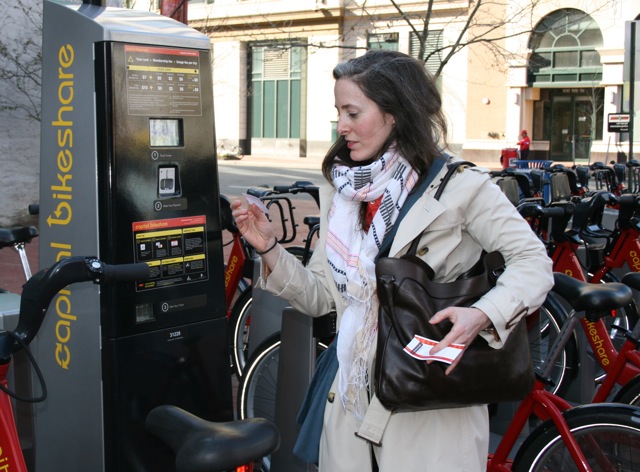Bike-share programs, as we know them, have been around for a decade. That seems to be enough time to notice some patterns in, and draw conclusions about, them.
A Rice University study has done just that, at least in regards to the share programs in four US cities. It notes two very interesting trends.
The first is that in Sun Belt cities, bike share programs are increasingly used for recreational cycling. That makes sense, given the longer cycling seasons in such places. Also, it makes sense when you realize that many retirees live in and around those cities, and that in some, "snowbirds" spend at least part of the year. Moreover, some residents of colder climes take vacations in those places, and their cycling is, almost by definition, recreational.
The study notes another trend that I have witnessed here in New York: More and more share bikes are used for transportation. If someone is living, say, on the Upper West or East Sides and working in Midtown or the Financial District, riding a bike to work is almost as fast, even for a slow cyclist, as taking the subway. Also, since many office buildings and some residential buildings have Citibike ports in front of, or within 50 meters, of them, it can be more convenient than having to walk several blocks to or from a subway station.
If a commuter is fortunate enough to have a Citibike port near his or her residence or workplace, there is another convenience: The bike can simply be taken from, or wheeled into, the port. The cyclist does not have to look for a free parking meter, telephone pole or other spot where he or she can lock up a bike in relative safety.
The study also makes another interesting observation about transportation uses of bike share programs: Workers use them to run lunchtime errands or simply to get lunch if they don't want to use their cars or mass transit but the distance is too great to walk. This could be a very important fact to consider when starting new bike-share programs or expanding those that already exist in lower-density cities like Houston and Denver, which are more highway-oriented and car-centric than cities like New York, Boston and San Francisco.
Even though a city might be lower in population density, it can still experience problems with traffic congestion--and, in the case of Denver or Los Angeles, air pollution. The Rice study seems to show that expanding bike share programs in those cities, and starting new ones in other cities like them, can help to unsnarl traffic tie-ups and improve air quality--which, of course, can only improve overall public health and safety.
A Rice University study has done just that, at least in regards to the share programs in four US cities. It notes two very interesting trends.
| From Wikipedia Commons |
The first is that in Sun Belt cities, bike share programs are increasingly used for recreational cycling. That makes sense, given the longer cycling seasons in such places. Also, it makes sense when you realize that many retirees live in and around those cities, and that in some, "snowbirds" spend at least part of the year. Moreover, some residents of colder climes take vacations in those places, and their cycling is, almost by definition, recreational.
The study notes another trend that I have witnessed here in New York: More and more share bikes are used for transportation. If someone is living, say, on the Upper West or East Sides and working in Midtown or the Financial District, riding a bike to work is almost as fast, even for a slow cyclist, as taking the subway. Also, since many office buildings and some residential buildings have Citibike ports in front of, or within 50 meters, of them, it can be more convenient than having to walk several blocks to or from a subway station.
If a commuter is fortunate enough to have a Citibike port near his or her residence or workplace, there is another convenience: The bike can simply be taken from, or wheeled into, the port. The cyclist does not have to look for a free parking meter, telephone pole or other spot where he or she can lock up a bike in relative safety.
The study also makes another interesting observation about transportation uses of bike share programs: Workers use them to run lunchtime errands or simply to get lunch if they don't want to use their cars or mass transit but the distance is too great to walk. This could be a very important fact to consider when starting new bike-share programs or expanding those that already exist in lower-density cities like Houston and Denver, which are more highway-oriented and car-centric than cities like New York, Boston and San Francisco.
Even though a city might be lower in population density, it can still experience problems with traffic congestion--and, in the case of Denver or Los Angeles, air pollution. The Rice study seems to show that expanding bike share programs in those cities, and starting new ones in other cities like them, can help to unsnarl traffic tie-ups and improve air quality--which, of course, can only improve overall public health and safety.







